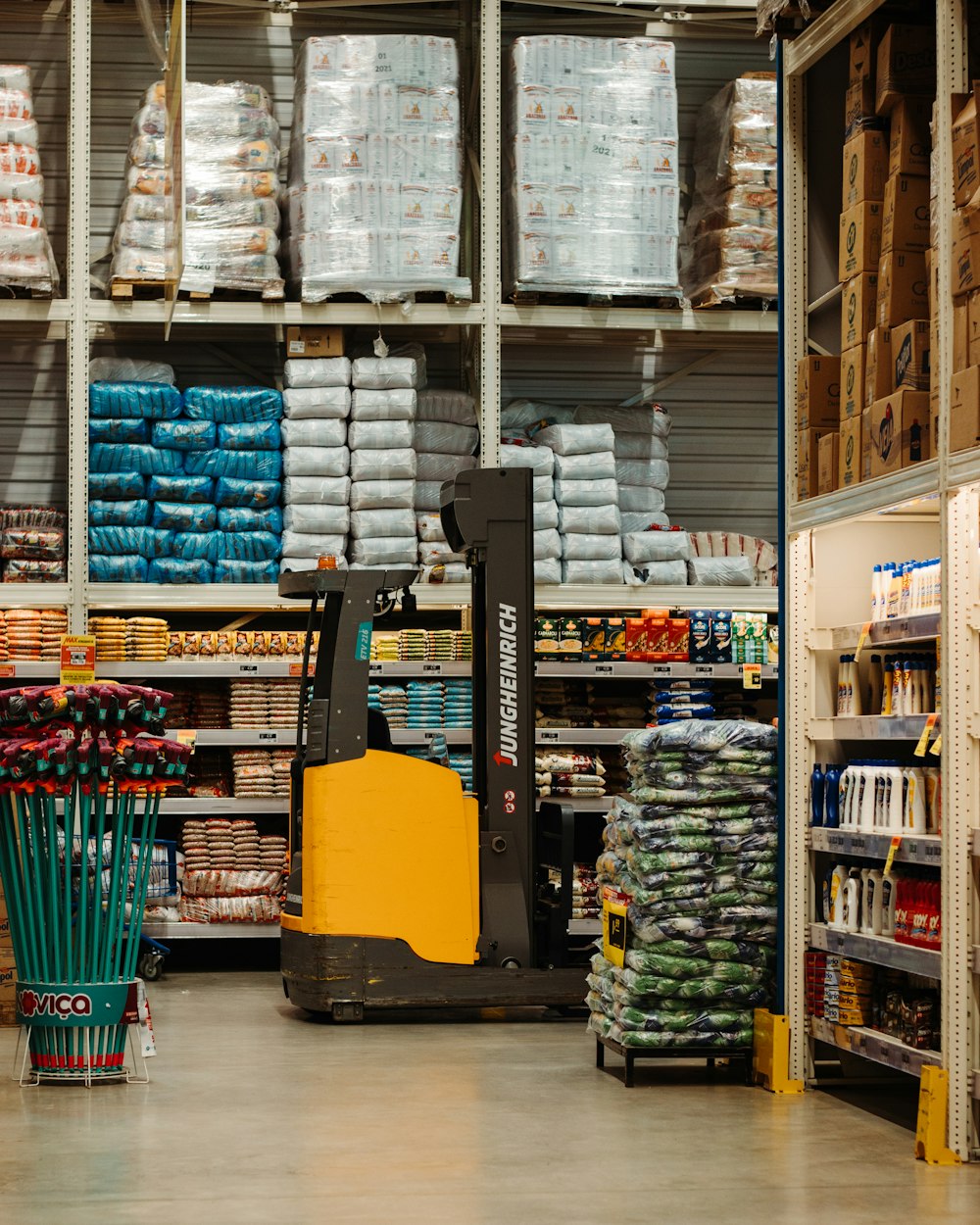About Warehouse Management
All of the operations that take place in a warehouse must be organized, managed, and maintained so that they work as smoothly and effectively as possible. Despite the fact that some of these procedures are automated and appear to be error-free, every warehouse operation is susceptible to errors and problems. According to a research released by McKinsey & Company in 2019, global warehousing expenditures are over £300 billion (roughly $385 billion) each year. That figure excludes the additional expenses of fixing errors and blunders.
Warehouse issues may impact the speed, efficiency, and productivity of a single warehouse activity as well as the entire chain of activities that are connected to it. The majority of the time, these problems are discovered after the procedure has started or even after it has been finished. And by then, it’s typically too late to avoid the mistake—and it may even be too late to mitigate the harm. However, if you have advance awareness of the various issues that may arise in your warehouse operation, you may anticipate them and prevent harm before it occurs.
In this post, we’ll go over some of the most typical warehouse management issues, as well as what you can do to avoid them.
Unintentional redundancy
The majority of warehouses conduct many processes on each item, which are then linked together to construct workflows. However, if a workflow isn’t well-organized, the identical activity may be executed more than once by accident. These redundancies raise labor expenses and add time to the process when you have to go back and correct a mistake. Because there is more room and goods to deal with in large warehouses than in smaller ones, this occurs more frequently.
Order picking, which is when items are chosen from their storage locations in a warehouse to fulfill an order, is a good example of redundancy. Order picking is a one-person process in smaller warehouses, leaving minimal opportunity for error. In a larger warehouse, however, several personnel collaborate to choose items from various regions of the warehouse in order to fulfill a single request. Because the same order gets handed around to numerous persons, there’s a higher potential of making a mistake, such as ordering too many of the same item.
Investing in technology, such as a modern warehouse execution system (WES), can help you automate the procedures in your warehouse that are prone to repetition. For example, you might utilize barcode technology to scan the goods that have been selected for the order and have the system alert the user of any duplicates to assist decrease redundancy in order picking.
Messy warehouse layout
Warehouse managers have been pressed to make more effective use of their warehouse space as storage prices have risen over time. However, according to a survey done by Logistics Management in 2018, it doesn’t always work—manufacturers’ average warehouse capacity was only approximately 68 percent. In warehouses, not having enough storage due to inefficient space use is still a widespread problem.
This difficulty can be solved by creating an appropriate warehouse plan. This involves making the most of the available floor and vertical space while yet allowing warehouse workers to move through. It also entails looking into methods to cut labor and labor expenses by utilizing automation and equipment, enhancing product accessibility in the warehouse, systematizing inventory categorization, and ensuring that inventory is kept safely.
To begin maximizing your warehouse space, follow these steps:
- Investigate technologies that can assist you in organizing the layout of your warehouse, such as a warehouse management system (WMS). Given the dimensions and measurements of your warehouse and inventory, certain WMSs can generate a 3D model of the most effective layout. An automated storage and retrieval system (AS/RS), which is a network of multiple computer-controlled pieces of equipment that automates your putaway and picking activities, is another option. Aside from increasing the speed and efficiency of your processes, an AS/RS may help you save a lot of space in your warehouse that would otherwise be wasted.
- You may always start basic if you’re not ready to enhance your technologies. To determine which goods from your inventory sell the fastest, use your current inventory and sales management technology. Then make sure you store such products in the most convenient areas so they can be picked up and put away quickly.
Inventory management is inefficient.
Have you been having any of these problems?
- Expecting to find a product in a specific area, only to discover that it is really located elsewhere.
- Accepting an order under the impression that you have enough stock to fulfill it, only to discover later that you don’t. You’ll have to place a backorder now, which will dramatically lengthen the time it takes for your order to arrive.
- Denying an order based on the assumption that you don’t have enough stock to fulfill it, only to discover that you do.
- You’re trying to put away merchandise you’ve gotten but can’t seem to figure out where to put it.
Any of these issues might suggest that you haven’t been keeping correct inventory records and updating them on a regular basis. According to a report by Wasp Barcode Technologies, 43 percent of small firms either don’t maintain inventory or do so manually. According to a Peoplevox poll, 34% of companies have delayed delivering because the goods stated in the order were not actually in stock. When inventory verification operations are done manually, mistakes are easy to make since there is so much possibility for human error. They can also occur when utilizing out-of-date software.
Switching to a modern warehouse system is one method to tackle these difficulties. This might be a dedicated inventory management system or a warehouse management software package that incorporates real-time inventory management capabilities. A typical system begins by scanning your inventory with a portable or stationary device like a barcode scanner. This data is subsequently supplied to your inventory management software, which catalogs and maintains your goods.
Inadequate preparation for seasonal needs
Certain types of items have consistent demand throughout the year, while others are more popular at various seasons of the year. Sudden surges in demand that catch you off guard might be disastrous, since your warehouse may not be equipped to handle the orders. This might be due to a lack of inventory or a lack of knowledge on where to put them on such short notice. It’s critical to be informed of current market trends and changes in demand for the items you work with so that you can adjust your stock levels as needed.
Here’s how you may get ready for the upcoming season’s demands:
- Maintain communication with your industry’s producers, distributors, merchants, transporters, and any other suppliers. As a result, every segment of the supply chain will have access to the same information regarding demand changes and will be able to collaborate to respond appropriately.
- Demand forecasting tools may also be used to determine what items you need in your inventory for the season.
- Arrange and organize your merchandise to help you sell your seasonal items more quickly. This entails locating them in the most convenient areas of your warehouses so that they may be stored away and chosen for orders quickly.
- Pallet flow rack systems, forklift trucks, and AS/RS are examples of warehouse equipment and automation solutions that may help your processes run more smoothly and quickly.
Order handling that isn’t up to par
Order management is one of the most crucial tasks in a warehouse, but it also has the highest number of mistakes. Order management encompasses all operations that begin the moment an order is received, from accepting the order through choosing, packaging, and delivering the correct items to the correct client, as well as addressing any post-sales issues such as refunds and returns. A mistake in any of these stages might cause the entire workflow to collapse, necessitating the repeating of all phases from the beginning. This is obviously a waste of time and money, and it will result in your client receiving their order later than anticipated.
Many firms use an order management system to assist keep their orders moving smoothly. This can assist you manage your complete order management and fulfillment procedures, such as shipping, customer notifications, and inventory management, depending on the system you pick.
High order fulfillment accuracy rates can increase your profitability in addition to saving time. According to AMR Research, businesses with great order rates of 80% or more are three times more profitable than businesses with order rates of 60%.
Excessive labor spending
Labor employees are engaged to do a variety of activities in a warehouse, including general labor, forklift operator, material handler, shipping and receiving monitor, shipping specialist, loader, product picker, stock clerk, and overall warehouse manager. Most warehouses are seeking for ways to invest in technology with all of the options available today. It’s a prevalent misconception that just automation and equipment are costly. However, what many warehouse managers fail to realize is that physical labor is not inexpensive either. According to Kane Logistics, one of the largest expenditures for certain warehouses is labor, which accounts for 50-70 percent of the whole storage budget.
As a result, start by analyzing all of the different labor tasks performed in your warehouse, then look at the solutions and systems in place. Consider automating more processes to see if you can boost their utilization. Small firms may opt to merge their warehouses with a partner company in order to reduce warehouse space and use the money saved on automating more of their duties. This has a significant impact on labor expenses. When you feel like you’re getting the most out of all of your present solutions and you just have enough personnel to handle activities that can’t be done manually, it’s time to think about adding additional automation technologies or even recruiting extra labor staff.
Damage control is lacking.
Damage is regrettably a typical problem in warehouses, particularly those that handle a lot of product and heavy machinery. While it’s impossible to totally eliminate harm, there are always ways to minimize it.
Pallet rack protectors, customized rack nets, guard rails, anti-slip tape, lockout systems, low clearance warning bars, and accumulation conveyor systems are all examples of safety equipment. Also, make sure your walkways are well-lit and broad enough for you to navigate around your merchandise easily. These precautions can help you safeguard your personnel, equipment, and inventory, as well as prevent workplace mishaps.
Examine your warehouse on a regular basis for early symptoms of damage to your equipment, storage facilities, or transportation vehicles. Examine your storage shelves and pallets for overcrowding, cracks, and breakage, for example. In addition, examine for other sorts of damage that might create difficulties in the future, such as water damage or bugs.
Warehouse management is one of the most important procedures in a warehouse, and it’s not something you can afford to do wrong. Because most warehouse management operations are interconnected in some manner, a failure in one might lead to costly errors in others. Accidental redundancy, a cluttered warehouse, poor inventory management, a lack of seasonal readiness, poor order management, excessive labor spending, and poor damage control may all cost you money and cause your warehouse operations to fail. You may limit the amount of harm caused by these errors or possibly prevent them from occurring entirely by educating yourself about the possible warehouse difficulties your warehouse may encounter and their remedies.
Introducing MHRA approved warehousing UK use can help you ensure smooth and error-free operations.










